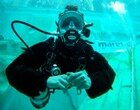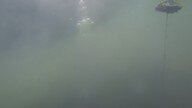- Messages
- 20,561
- Reaction score
- 14,946
- # of dives
- I'm a Fish!
and that's the bull**** kool-aid that the GUE/UTD followers have drank by the gallon and don't know how to use their brains and think about it.
There are a LOT of differences in principle, and detail. The isolation manifold for the Z-system is a needle valve, identical to the valves on your scuba tanks, the switch blocks use ballcocks, the same ones that are used in high pressure oil and gas lines and are very reliable and secure, there are differences in how and why you would want to use each type of valve, but that doesn't make one better than the other, just different for different purposes.
UTD puts all of the low pressure distribution in a non isolated area on top of the one in the first stage. You have all of the o-rings on the first stage, plus all of the hoses, so extra failure points there. With a switch block you are only adding the switching block, which again, are used every day in every sort of application imaginable, including commercial diving applications where they are under much more stress than any recreational profile.
If you want to talk about minimalism, remove your long hose, remove your SPG's, remove your power inflator hoses. Orally inflate your drysuit and wing, buddy breathe off one one regulator, and use J-valves instead of K-valves with SPG's. That's the only way dive truly "minimalist". Or hell, better yet, just baretank breathe, that'll remove all of the above failure points that you are adding to make the dive safer and more comfortable. FFM's can make dives safer for many divers, ice diving becomes less physically traumatic and risky for the divers because less skin is exposed to the water, they add safety in important diving missions where communication is necessary. If they made sense for everyone, then everyone would be using them, they don't, that isn't the point. The point is that if you feel that you would benefit from having one, then you need to understand that potential failure points and make a calculated decision.
Second stage failures, o-ring failures, valve failures are all very uncommon during a dive, what is common is a first stage failure. A switch block adds a couple of quick disconnects, again used every day in critical life support applications, a ball cock, again used every day, and adds the safety for the diver to be able to connect a second bottle in the case of a first stage failure, or switch decompression bottles without having to expose himself to the environment, allows communication back to surface support or other dive teams in areas where visibility is extremely low or has the potential to blow out and touch contact isn't an option. Lots of pro's, lot's of con's, but don't bash something that is mission critical for some, and simply more comfortable for others.
You add more failure points by diving sidemount than you do in backmount, but you made that calculated decision, and decided that the pro's outweighed the con's, same can be said for diving FFM's with switch blocks.
There are a LOT of differences in principle, and detail. The isolation manifold for the Z-system is a needle valve, identical to the valves on your scuba tanks, the switch blocks use ballcocks, the same ones that are used in high pressure oil and gas lines and are very reliable and secure, there are differences in how and why you would want to use each type of valve, but that doesn't make one better than the other, just different for different purposes.
UTD puts all of the low pressure distribution in a non isolated area on top of the one in the first stage. You have all of the o-rings on the first stage, plus all of the hoses, so extra failure points there. With a switch block you are only adding the switching block, which again, are used every day in every sort of application imaginable, including commercial diving applications where they are under much more stress than any recreational profile.
If you want to talk about minimalism, remove your long hose, remove your SPG's, remove your power inflator hoses. Orally inflate your drysuit and wing, buddy breathe off one one regulator, and use J-valves instead of K-valves with SPG's. That's the only way dive truly "minimalist". Or hell, better yet, just baretank breathe, that'll remove all of the above failure points that you are adding to make the dive safer and more comfortable. FFM's can make dives safer for many divers, ice diving becomes less physically traumatic and risky for the divers because less skin is exposed to the water, they add safety in important diving missions where communication is necessary. If they made sense for everyone, then everyone would be using them, they don't, that isn't the point. The point is that if you feel that you would benefit from having one, then you need to understand that potential failure points and make a calculated decision.
Second stage failures, o-ring failures, valve failures are all very uncommon during a dive, what is common is a first stage failure. A switch block adds a couple of quick disconnects, again used every day in critical life support applications, a ball cock, again used every day, and adds the safety for the diver to be able to connect a second bottle in the case of a first stage failure, or switch decompression bottles without having to expose himself to the environment, allows communication back to surface support or other dive teams in areas where visibility is extremely low or has the potential to blow out and touch contact isn't an option. Lots of pro's, lot's of con's, but don't bash something that is mission critical for some, and simply more comfortable for others.
You add more failure points by diving sidemount than you do in backmount, but you made that calculated decision, and decided that the pro's outweighed the con's, same can be said for diving FFM's with switch blocks.











